View in gallery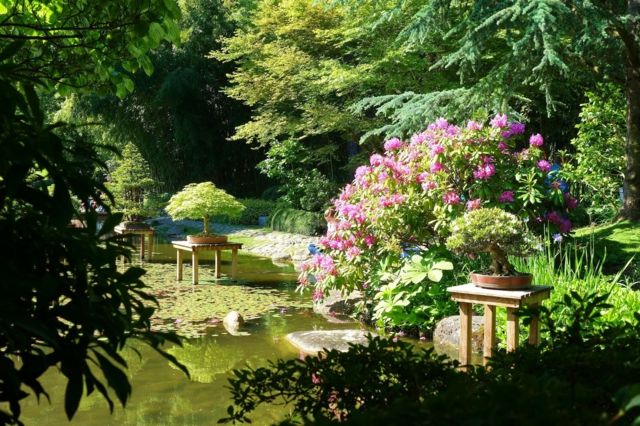 Asian water garden: beauty and meditation | 1/14
Asian water garden: beauty and meditation | 1/14
What makes all the appeal of a asian water garden, it is clear water that allows to see the bottom of the basin, fish or visible crustaceans, all dotted with lush vegetation.
Deriving from Chinese and Japanese influence, the Asian Water Garden is designed for privacy and meditation.
An Asian water garden with a pond surrounded by stones and plants
View in gallery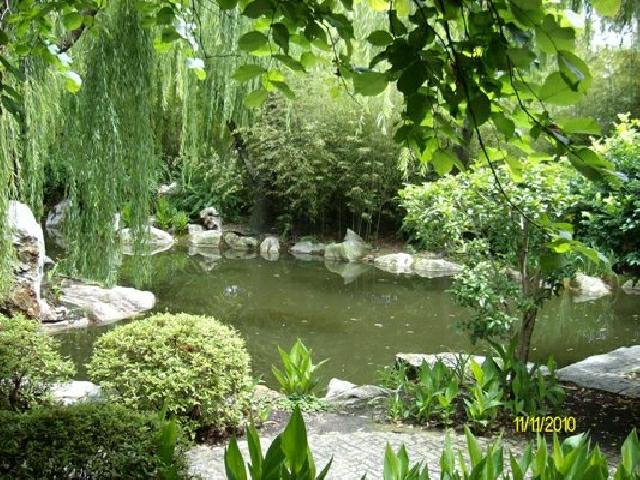 Asian water garden: beauty and meditation | 2/14
Asian water garden: beauty and meditation | 2/14
An Asian water garden is not usually and necessarily a big space. It can be built even in a fairly modest site. Before installing such a garden, it is necessary to evaluate ground, and to identify the key areas of the tracks and plantations defined according to the specificities of the garden. Among the characteristics of the Japanese garden is its sobriety. But the Chinese style is generally more open and complex. The main actors in the Asian water garden are stone and water that are complementary.
A typical Japanese style water garden
View in gallery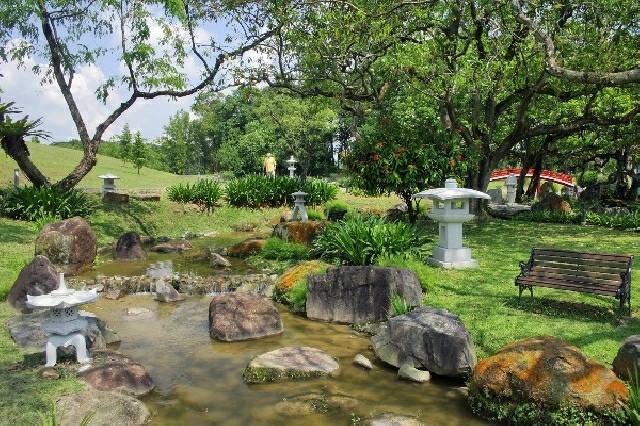 Asian water garden: beauty and meditation | 3/14
Asian water garden: beauty and meditation | 3/14
You can use typical Asian attributes, such as bamboo fences, a single stone, or a group of traditional figures, turtles, stone lanterns, benches, and kiosks with pointed roofs. The site should be packed with gravel tiles or stone flooring, supplemented by green moss in sunny locations.
A water garden full of flowers with a bridge in the shape of a donkey
View in gallery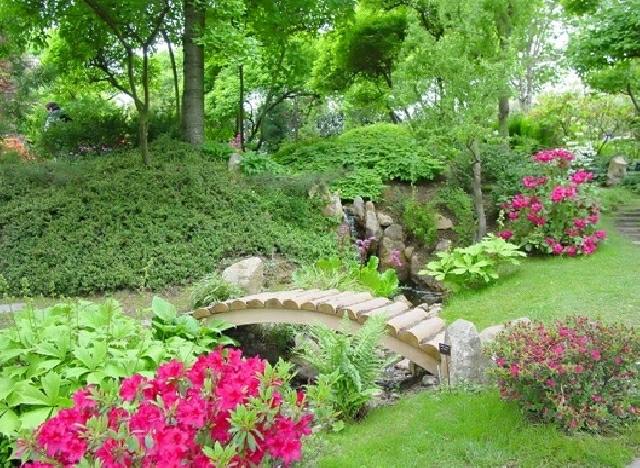 Asian water garden: beauty and meditation | 4/14
Asian water garden: beauty and meditation | 4/14
The different types of coatings combine with each other to appear as natural as possible. The soil excavated in the “bed” formation of the reservoir can be used to create artificial hills, islands, cascading waterfalls. In the narrow sections of the basin it is necessary to put a bridge. Like all the other elements in the Asian water garden.
A water garden with a splendid waterfall
View in gallery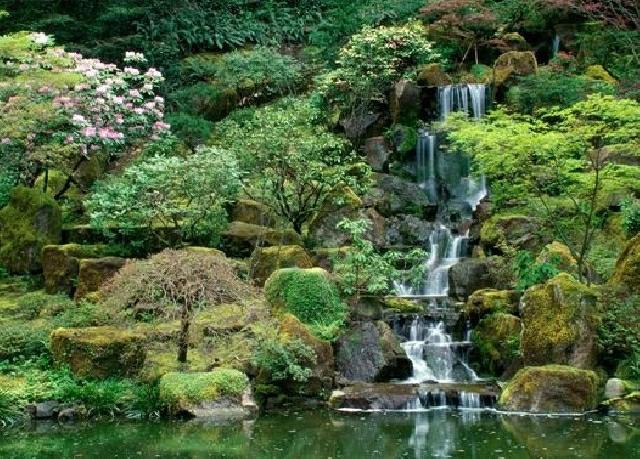 Asian water garden: beauty and meditation | 5/14
Asian water garden: beauty and meditation | 5/14
Among the features of the Eastern tradition, path paths. With their help, we vary the pace and direction of the walk. The width of the path and the path can change the optical illusion to increase or decrease the area. The important thing is the material from which it is designed. In traditional gardens we prefer grasses and ferns. They surround the paved paths, fill the slopes and frame the boundaries of the basins. It is important to preserve the contemplative nature of the compositions, keeping symmetry and regularity, all plants should look more natural.
Zoom of a red bridge and a view towards an Asian garden
View in gallery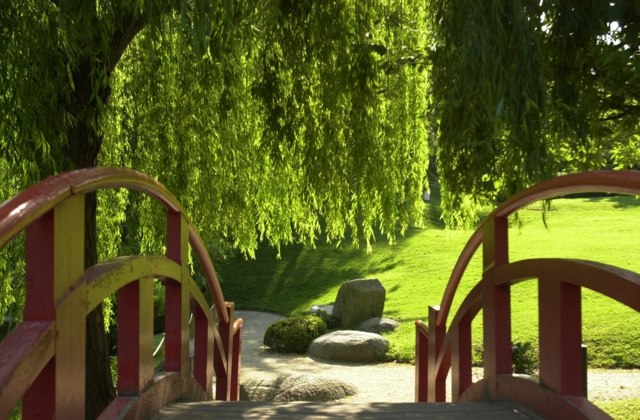 Asian water garden: beauty and meditation | 6/14
Asian water garden: beauty and meditation | 6/14
View of golden fish in an aquatic garden
View in gallery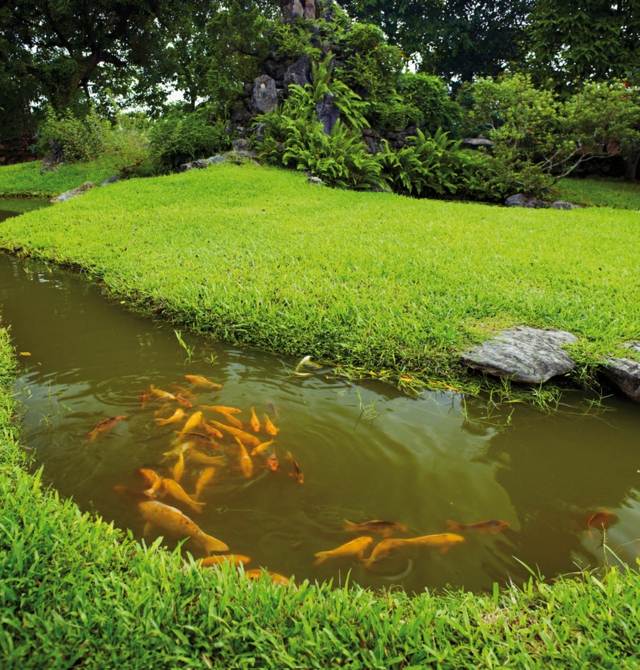
Asian water garden: beauty and meditation | 7/14
Nucturne view of an aquatic garden
View in gallery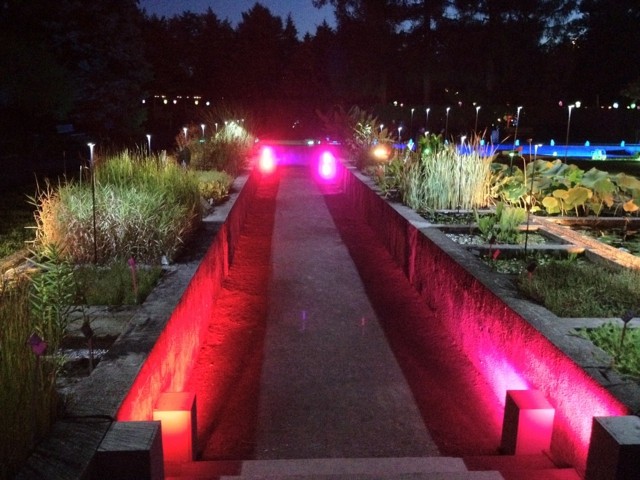 Asian water garden: beauty and meditation | 8/14
Asian water garden: beauty and meditation | 8/14
View of a green Japanese garden
View in gallery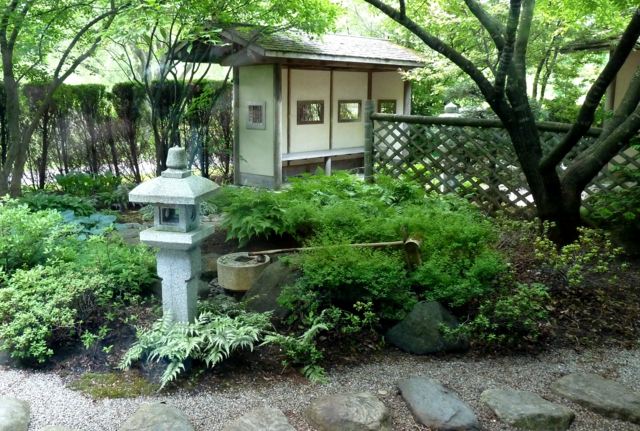 Asian water garden: beauty and meditation | 9/14
Asian water garden: beauty and meditation | 9/14
View from above of an Asian water garden
View in gallery Asian water garden: beauty and meditation | 10/14
Asian water garden: beauty and meditation | 10/14
View of a decorative waterfall
View in gallery Asian water garden: beauty and meditation | 11/14
Asian water garden: beauty and meditation | 11/14
View in gallery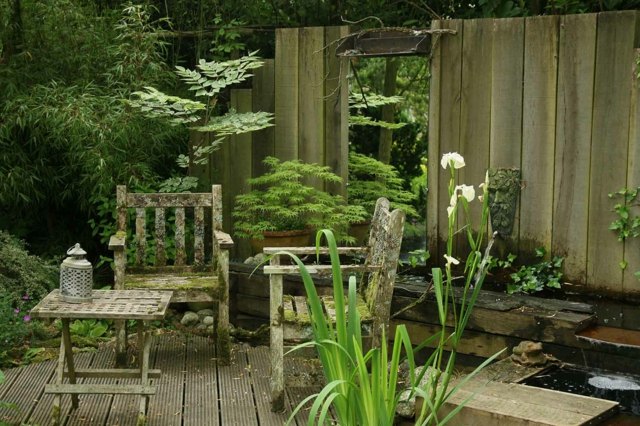 Asian water garden: beauty and meditation | 12/14
Asian water garden: beauty and meditation | 12/14
View in gallery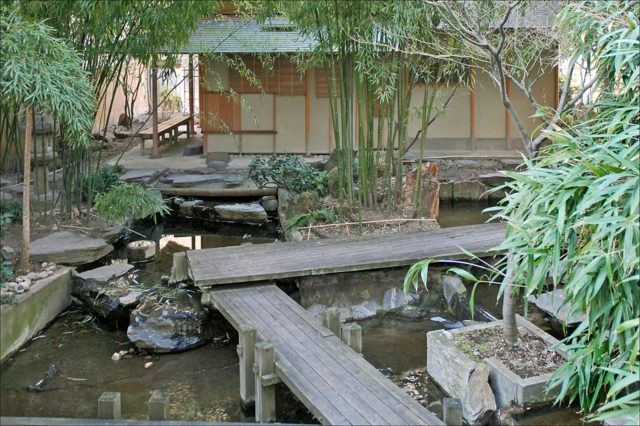 Asian water garden: beauty and meditation | 13/14
Asian water garden: beauty and meditation | 13/14
View in gallery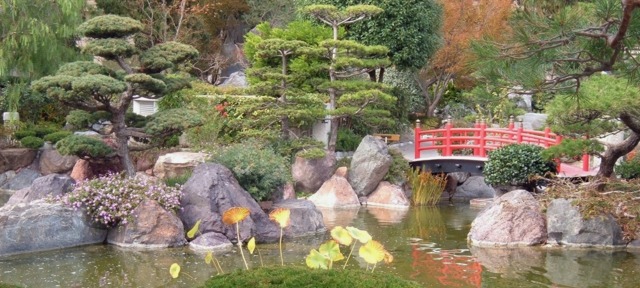 Asian water garden: beauty and meditation | 14/14
Asian water garden: beauty and meditation | 14/14
Robert Lebrun in